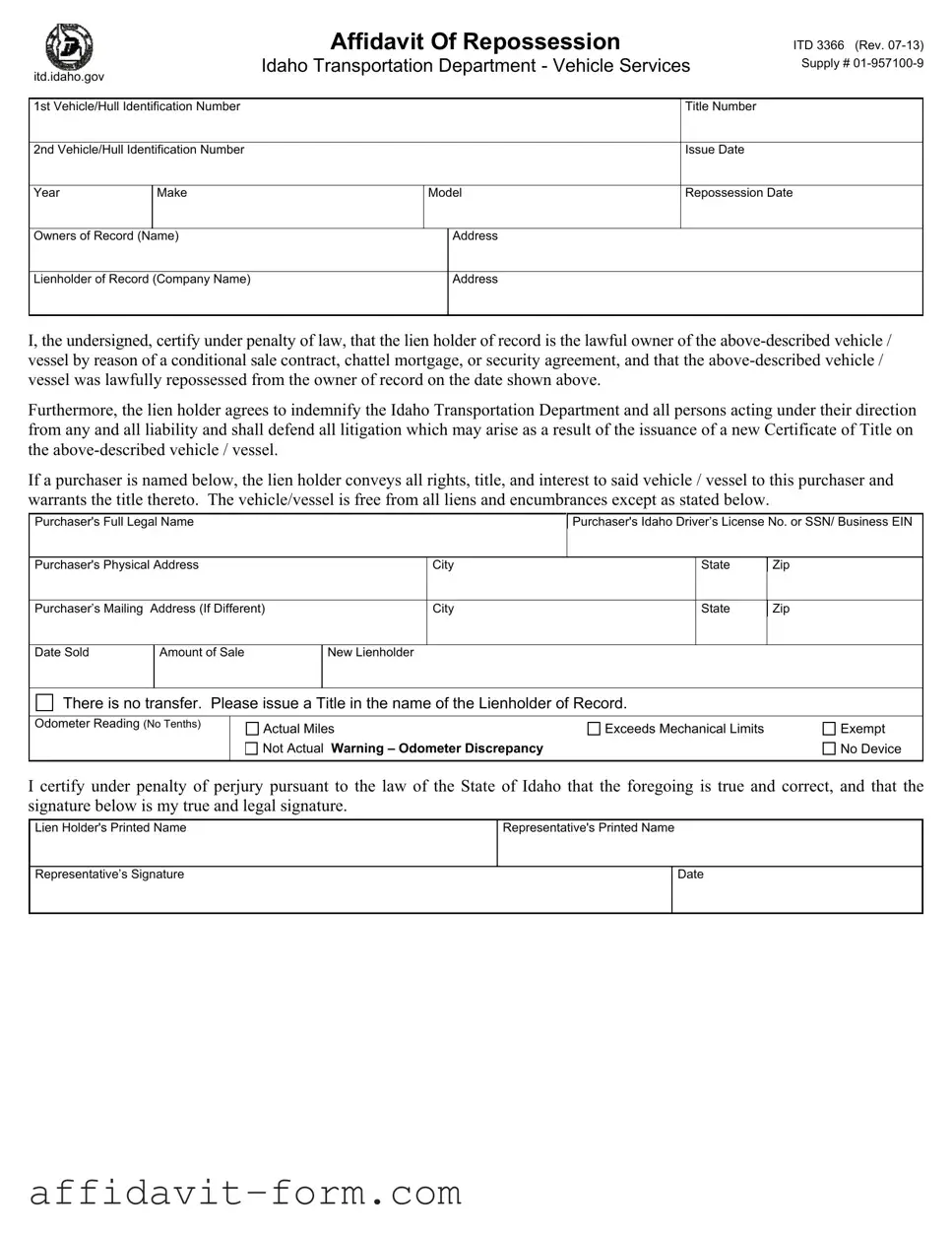An Affidavit of Repossession form is a legal document used by the lienholder to confirm they have lawfully repossessed a vehicle or vessel. This form is typically used in situations where the owner of the vehicle fails to meet the terms of their financing agreement. By filling out this form, the lienholder can obtain a new Certificate of Title for the repossessed vehicle or vessel in their name, verifying that they are the rightful owner.
When do I need to submit an Affidavit of Repossession?
This form is required when a lienholder has repossessed a vehicle or vessel due to a breach of the financing agreement by the owner, such as failing to make the agreed payments. After repossessing the vehicle or vessel, the lienholder must submit the Affidavit of Repossession to the Idaho Transportation Department to update the ownership records and receive a new title.
The required information includes:
-
The Vehicle/Hull Identification Number.
-
The title number of the repossessed item.
-
Repossession date and details about the vehicle or vessel, such as the year, make, and model.
-
The name and address of the owners of record and the lienholder of record.
-
A certification statement by the lienholder regarding the lawful repossession.
-
Details about the purchaser if the vehicle or vessel is being sold, including their name, ID or EIN, and addresses.
-
The odometer reading at the time of sale.
The completed Affidavit of Repossession form should be submitted to the Idaho Transportation Department - Vehicle Services. You can find the mailing address or the location for in-person submission on the Idaho Transportation Department’s official website.
Is there a penalty for not submitting an Affidavit of Repossession?
Yes, failure to submit an Affidavit of Repossession may result in legal complications for the lienholder, including difficulties in securing ownership and transferring the title of the repossessed vehicle or vessel. Additionally, the original owner may face legal and financial consequences.
Can the original owner dispute a repossession?
Yes, an original owner can dispute a reposession if they believe it was conducted unlawfully or in error. However, they would typically need to provide substantial proof to challenge the lienholder’s claim. Disputes are usually resolved through legal proceedings.
Upon submission and verification of the form by the Idaho Transportation Department, a new Certificate of Title will be issued in the name of the lienholder if no purchaser is specified, otherwise, it will be issued in the name of the new owner. This updates the legal ownership records of the vehicle or vessel.
Are there any fees associated with filing the Affidavit of Repossession?
Yes, there may be fees associated with the filing and processing of the Affididavit of Repossession. These fees can vary and may include costs for issuing a new title. For the most accurate and up-to-date information on fees, check with the Idaho Transportation Department.
After submitting your form, the Idaho Transportation Department will process it and, if everything is in order, issue a new Certificate of Title. You will receive notification of the successful processing and details on how to collect the new title or it will be mailed to you, depending on the department's procedures.

